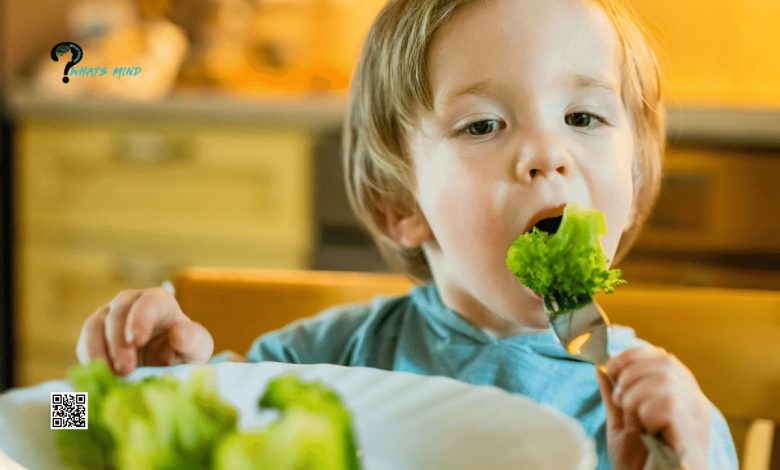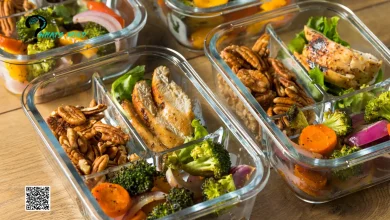10 Tips To Introduce Vegetables To Your Baby And Toddler

Introducing various vegetables early in your baby’s diet is essential for nurturing a healthy eating pattern and broadening their taste preferences. This crucial step encourages nutritious habits and introduces a range of flavors and textures, setting the foundation for a well-rounded palate and long-term dietary wellness in your child’s formative years.
This article provides practical tips and strategies to make this transition smooth and enjoyable for parents and children.
Table of Contents
Understanding The Importance Of Vegetables In Early Diet
Knowing the importance of vegetables in an early diet is key to ensuring optimal growth and development in young children. Rich in essential nutrients, vegetables provide various vitamins and minerals necessary for proper physical and cognitive development.
Vegetables are also an excellent source of dietary fiber, promoting healthy digestion. The antioxidants in vegetables play a critical role in bolstering the immune system, helping protect against illnesses. Incorporating various vegetables early on sets the stage for lifelong health and well-being.
Moreover, for parents seeking inspiration and ideas, reputable resource websites like Serenity Kids offer a wealth of information on introducing vegetables to babies and toddlers. Their approach to using carrots in various forms, such as purees and puffs, demonstrates the versatility of vegetables in young children’s diets.
Ways To Introduce Vegetables To Your Baby And Toddler
After understanding the importance of introducing vegetables to your baby and toddler, it’s time to get familiar with some tips. These include:
Start With Mild Flavors
Starting with mild-flavored vegetables like carrots, peas, and sweet potatoes is ideal for introducing vegetables to your baby. Therefore, these veggies have milder flavors and are less likely to be rejected by your baby’s developing taste buds.
It’s also a gentle way to introduce them to the world of vegetables, making the transition to solid foods smoother and more enjoyable for both the baby and the parents.
Ensure Consistency
In the early stages of introducing vegetables, it’s crucial to focus on consistency to ensure it’s suitable for your baby. Purees and mashed vegetables are excellent choices, providing a texture that’s not only safe but also appealing to your little one. This approach minimizes the risk of choking and aids digestion.
Vary The Colors
Introducing a variety of colored vegetables is beneficial for both the visual appeal and nutritional value. Each vegetable color represents different vitamins and minerals essential for your child’s growth and development. This rainbow of options makes the plate more inviting and ensures a balanced intake of nutrients vital for your child’s health.
Lead By Example
Children are great imitators, especially of their parents. By eating various vegetables yourself, you set a positive example for your child. This approach can be incredibly effective in encouraging your child to try and enjoy a wide range of vegetables, fostering healthy eating habits from a young age.
Mix And Match
Mixing vegetables with fruits or other familiar foods can help introduce new flavors to your child. Gradually incorporating vegetables helps children become accustomed to their flavors, smoothing the transition to a varied diet.

It’s an effective technique to make the experience of trying new foods more enjoyable for young eaters. This approach fosters a more accepting and adventurous attitude towards a diverse range of foods in their diet.
Be Patient
Introducing new foods to children can often be challenging, requiring patience and persistence. It’s common for children to initially reject new vegetables, but repeated exposure can gradually lead to acceptance. Offering the same vegetable multiple times can eventually lead to your child developing a taste for it.
Make It Fun
Making the presentation of vegetables fun and creative can significantly increase their appeal to toddlers. Using fun shapes or incorporating vegetables into games can make eating them an enjoyable experience. This creative approach can transform mealtime from a challenge into an exciting activity.
Educate Through Meals
Mealtime can be an educational opportunity to teach your child about the benefits of eating vegetables. Simple, age-appropriate explanations about how vegetables contribute to strength and health can motivate your child to eat them. This approach not only feeds their body but also their curiosity and knowledge.
Watch For Allergies
When introducing new vegetables, it’s important to be vigilant about potential allergic reactions. By introducing one type of vegetable at a time, parents can closely monitor their child’s response to each new food.
This methodical approach not only prioritizes the child’s safety but also aids in the early identification of any food sensitivities or allergies, allowing for timely intervention and adjustment of the child’s diet. This proactive strategy is essential in ensuring a safe and healthy introduction to a variety of vegetables during early childhood nutrition.
Encourage Self-Feeding
As your child grows, encouraging self-feeding with finger-friendly vegetable options is important for developing independence and a positive relationship with food. This practice fosters motor skills and allows your child to explore and enjoy food at their own pace, promoting a healthy attitude towards eating.
Conclusion
Introducing vegetables to your baby and toddler sets the foundation for a lifelong habit of healthy eating. By following these tips, you can ensure your child develops a love and appreciation for nutritious foods.
For more information, visit Whatsmind.com




